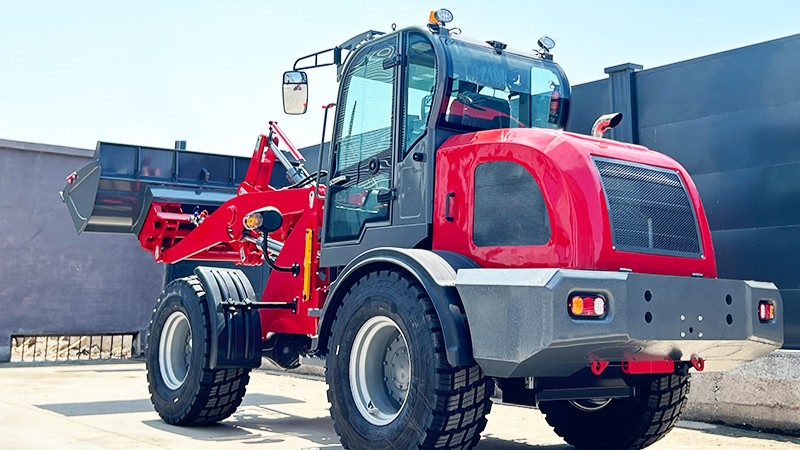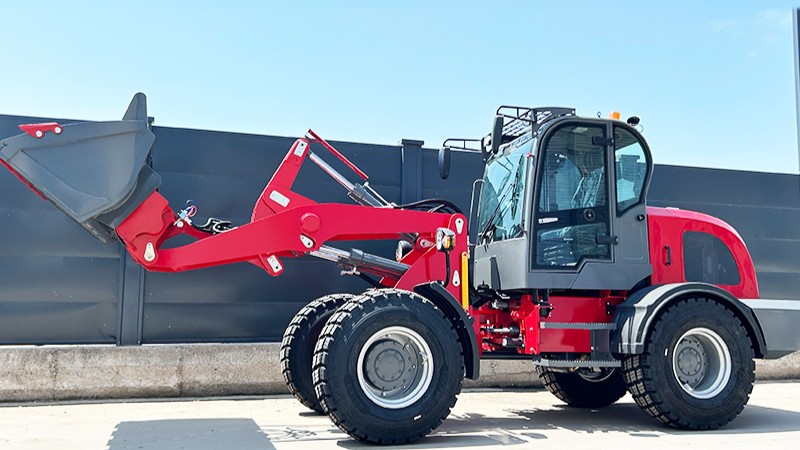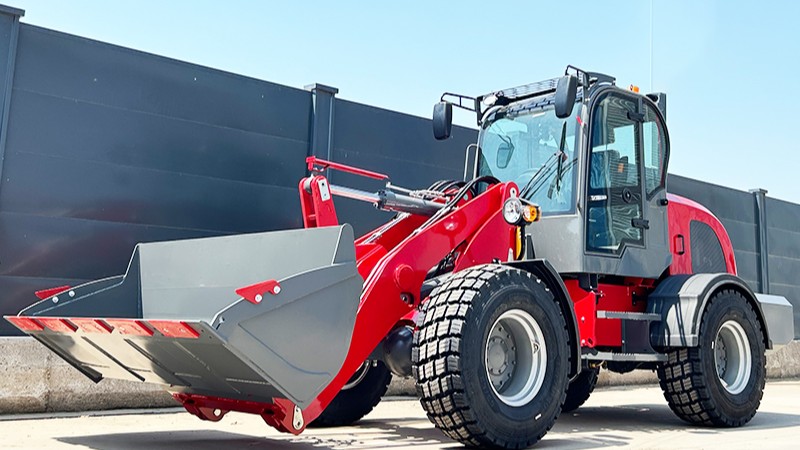In the current global construction equipment market, the question of whether investing in a used Euro wheel loader is a good choice has attracted widespread attention from investors, construction companies, and small - and medium - sized enterprises. With the continuous development of the construction industry, the demand for efficient and reliable loaders is increasing. However, the high price of new Euro wheel loaders has made many enterprises hesitate. At this time, used Euro wheel loaders have gradually become a cost - effective alternative, but their investment value still needs to be comprehensively analyzed from multiple perspectives.First of all, from the perspective of market demand and cost - effectiveness, used Euro wheel loaders have obvious advantages. Europe has always been at the forefront of the global construction equipment manufacturing industry, and Euro wheel loaders are well - known for their advanced technology, stable performance, and strong durability. Even for used equipment, as long as they have been properly maintained, their service life can still be guaranteed. For small - and medium - sized construction enterprises or start - ups with limited funds, purchasing a used Euro wheel loader can significantly reduce the initial investment cost. Taking the mainstream models in the market as an example, the price of a new Euro wheel loader usually ranges from 150,000 to 500,000 euros, while the price of a used one with 2 - 3 years of service life and low working hours can be 30% - 50% lower than that of a new one. This not only reduces the financial pressure on enterprises but also allows them to allocate more funds to other aspects of production and operation, such as project development and employee training.
In addition, the mature after - sales service system of Euro wheel loaders also provides a guarantee for the investment value of used equipment. Major European equipment manufacturers, such as Volvo, Caterpillar, and Liebherr, have established a large number of after - sales service outlets and spare parts supply centers around the world. Even for used loaders, users can easily obtain professional maintenance services and genuine spare parts. This avoids the situation where some low - quality second - hand equipment is difficult to maintain and repair after purchase, which affects the normal progress of the project. At the same time, the high resale value of Euro wheel loaders is also an important factor to consider. Due to their good brand reputation and reliable quality, used Euro wheel loaders still have a relatively high market demand when users need to update equipment or adjust the scale of operation. Compared with some unknown brand loaders, their depreciation rate is lower, which can reduce the loss caused by equipment replacement to a certain extent.However, it should be noted that although used Euro wheel loaders have certain investment value, there are also certain risks. For example, some used equipment may have hidden faults due to improper use or lack of maintenance in the previous use process, which may lead to increased maintenance costs and even affect the safety of the project in the later use. Therefore, before purchasing a used Euro wheel loader, a comprehensive and detailed inspection is essential. The inspection work should cover multiple aspects, including the mechanical performance of the equipment, the status of key components, the compliance of legal procedures, and the records of previous maintenance and use.When inspecting the mechanical performance of a used Euro wheel loader, the first thing to do is to conduct a test run. During the test run, pay attention to the starting condition of the engine, whether there is abnormal noise or vibration during operation, and the response speed of the accelerator and brake. At the same time, check the operation status of the loader's working device, such as the lifting and lowering speed of the bucket, the flexibility of the steering, and whether there is oil leakage in the hydraulic system. The hydraulic system is one of the core components of the loader, and any problem in it may directly affect the working efficiency and service life of the equipment. Therefore, it is necessary to carefully check the hydraulic oil level, color, and clarity. If the hydraulic oil is turbid or has impurities, it may indicate that the hydraulic system has been worn or polluted, and further inspection is required.
The status of key components is another important part of the inspection. The engine, transmission system, and axle are the three core components of the loader, and their quality directly determines the overall performance of the equipment. For the engine, check the number of working hours (usually recorded on the instrument panel), the condition of the cylinder head gasket, and whether there is oil seepage in the oil pan. Generally speaking, the service life of a Euro wheel loader engine is about 10,000 - 15,000 working hours. If the number of working hours of the used equipment is close to or exceeds this range, even if the appearance is good, it may face the problem of frequent maintenance in the later period. For the transmission system, check the smoothness of gear shifting and whether there is abnormal noise during the transmission process. If there is difficulty in shifting or obvious noise, it may indicate that there is a fault in the clutch, gearbox, or other components. The axle should be checked for oil leakage and the tightness of the connecting bolts. Loose bolts or oil leakage may lead to more serious faults if not handled in time.Legal compliance is also an issue that cannot be ignored when purchasing a used Euro wheel loader. First, check whether the equipment has complete property rights certificates, such as the original purchase invoice, registration certificate, and inspection certificate. These documents can prove the legal source of the equipment and avoid purchasing stolen or mortgaged equipment. Second, confirm whether the equipment meets the local environmental protection and safety standards. Different countries and regions have different requirements for the emission standards of construction equipment. For example, the European Union has strict emission regulations (such as Euro V and Euro VI standards). If the purchased used loader does not meet the local emission standards, it may be prohibited from being used in construction projects, resulting in huge economic losses. In addition, it is necessary to check whether the equipment has a history of accidents or major repairs. This information can be obtained by querying the equipment's maintenance records or communicating with the previous owner. If the equipment has experienced a major accident, even if it has been repaired, its structural strength and performance may be affected, and the risk of failure in the later use will be greatly increased.
Post time:Sep.30.2025



